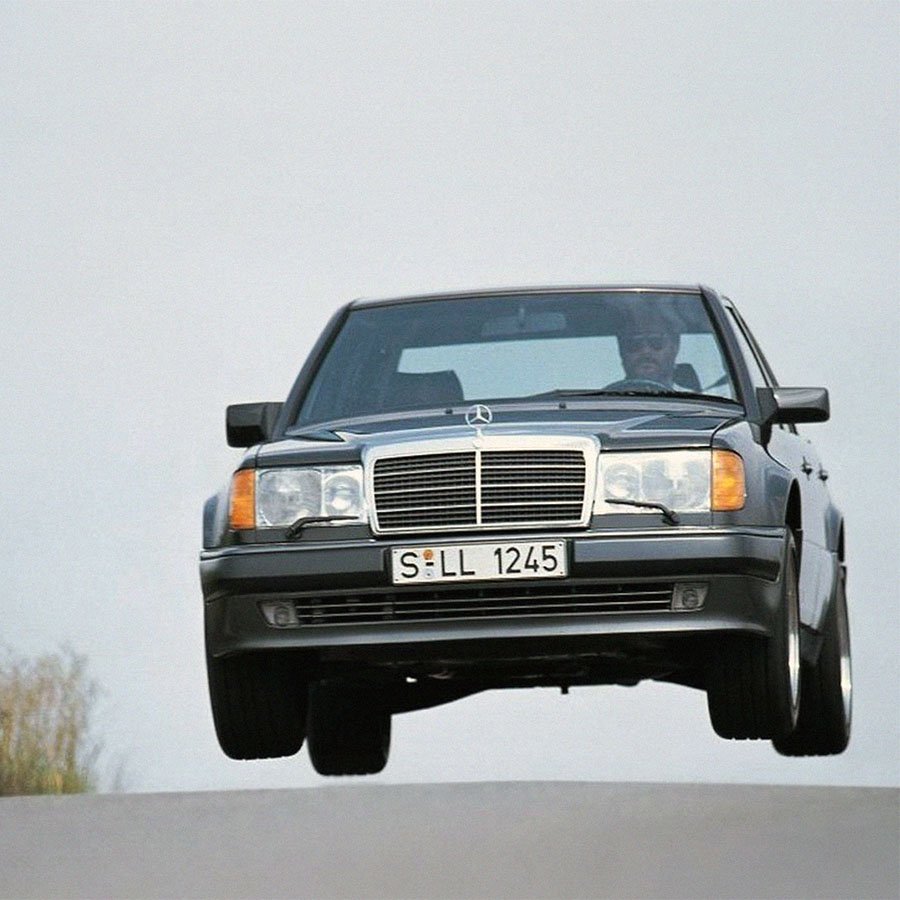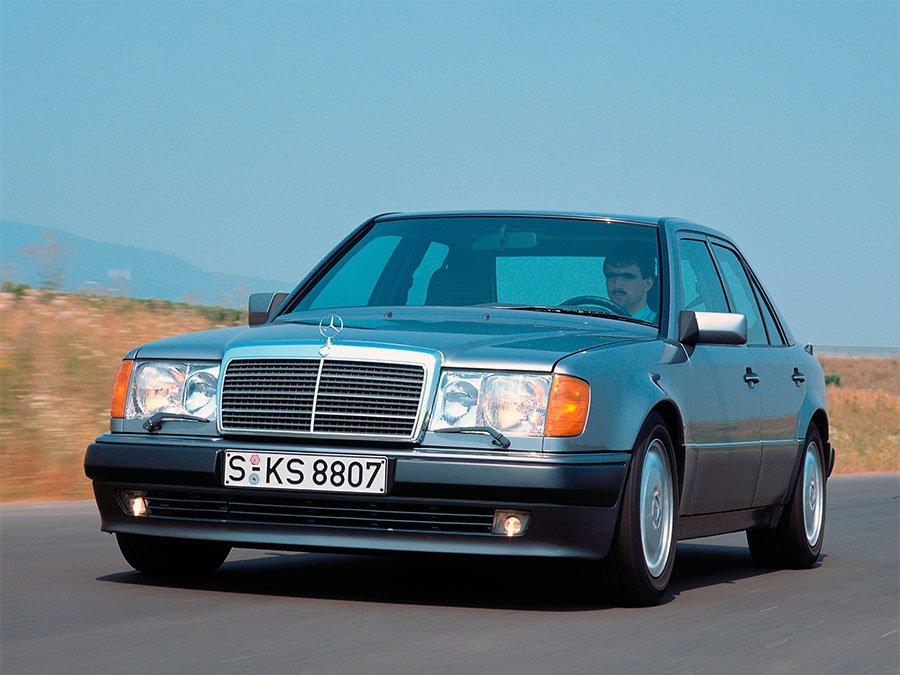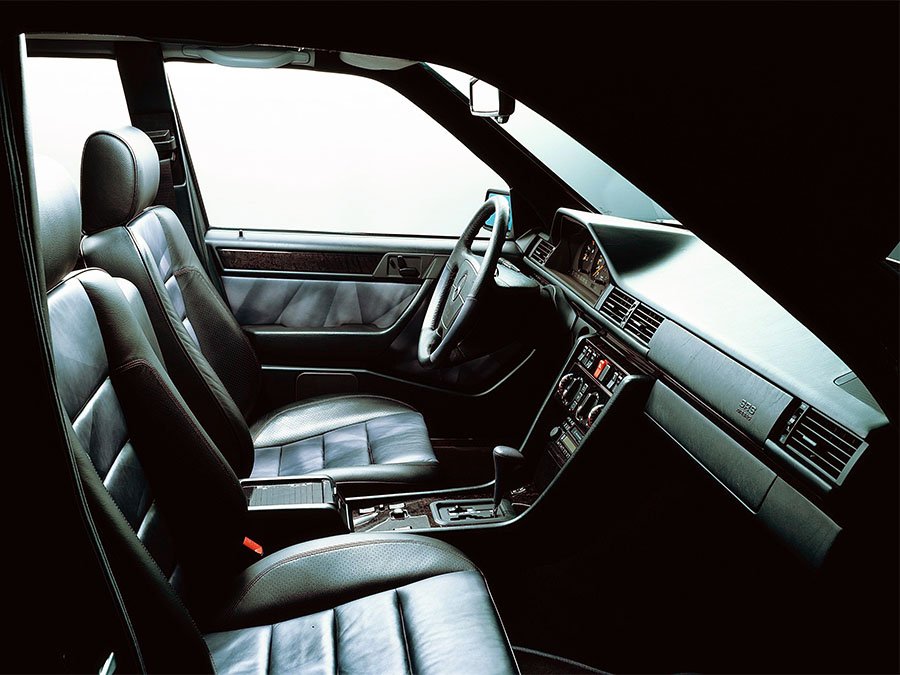Guide: Mercedes-Benz W124 500 E / E 500 - a Historical & Technical Appraisal
/BACKGROUND
Since the early 1970s, BMW’s Motorsport-equipped models had played a significant role in helping to establish the firm as a modern day rival to Mercedes-Benz.
Mercedes subsequently got in on the action with the hot Cosworth-developed 190 E 2.3-16 in late 1983, but otherwise relied on its glamorous line of SL convertibles to sprinkle a little stardust on the rest of the range.
Those customers that wanted a performance-tuned and cosmetically enhanced Mercedes had to turn to AMG with whom the parent company had a semi-official relationship originally borne out of motor sport collaboration.
In early 1988, the Mercedes board finally decided they wanted to offer a BMW M5 rival based on the critically acclaimed W124 E-class.
The W124 had replaced the outgoing W123 for the 1985 model year. The new Bruno Sacco designed machine was initially available as a four-door E-class Saloon. Estate (TE) and Coupe (CE) body styles joined the line up soon after. A variety of inline four, five and six cylinder engines were offered in both petrol and diesel trim.
At the Frankfurt Motor Show in September 1989, Mercedes introduced an updated W124 that most notably came with new lower cladding down each flank.
Mercedes’ new E-class M5 rival was in many respects a spiritual successor to 300 SEL 6.3 of 1968 to 1972 and would similarly combine the comfort of a luxury saloon with the performance of a sports car. The plan was to incorporate an array of components from the forthcoming R129 500 SL that would break cover at the Geneva Motor Show in March 1989.
As Mercedes’ Sindelfingen plant was running at maximum capacity and the firm was not geared up for a low volume production model, a partner organisation was sought to help with development and production.
While AMG may have seemed an ideal candidate for this, the Affalterbach firm did not have the necessary infrastructure to produce said car in the thousands every year.
As a result, Mercedes turned to Porsche.
An agreement was struck that saw Porsche commissioned to act as a development service provider for what became known as Project 2758.
Porsche were responsible for practically all the integration work required which included modification of the W124 bodyshell to accept a five-litre V8 engine.
The order from Mercedes was extremely important for Porsche who were able to employ their Rossle-Bau factory in Zuffenhausen which had been under-utilised since the end of 959 production. In the years that followed, the collaboration proved even more vital as Porsche slipped into a financial crisis as a result of falling sales, outdated models and inefficient manufacturing processes.
The highly anticipated Porsche-developed W124-based 500 E (internal code W124.036) was presented at the Paris Motor Show in October 1990. Production began in December 1990 and the 500 E went on sale in the spring of 1991.
The understated machine was offered in left-hand drive only and cost over twice as much as the hitherto top-of-the-range 300 E Saloon.
A laborious production process saw each 500 E transferred between Sindelfingen and Zuffenhausen four times. The entire process took 18 days per car which was six times longer than a standard W124.
Bodyshells were delivered from Mercedes to Porsche where they were modified and fitted with an array of special parts to include flared fenders. The bodies-in-white were then transported back to Mercedes for paint and rust-proofing. From here they returned to Porsche for final assembly. Upon completion, each car was sent back to Mercedes where it was inspected, tested and signed off.
CHASSIS
Each 500 E started life as a standard W124 Saloon pressed steel monocoque with 2800mm wheelbase.
Upon delivery to Porsche’s Rossle-Bau plant, the bodyshells were strengthened and modified to accept Mercedes’ Type M119 V8 engine which was mounted as far back as possible.
As a result of the much-reduced amount of space in the engine bay, the battery had to be relocated to the trunk (which proved advantageous for weight distribution).
Like the standard W124, the 500 E retained a MacPherson strut suspension layout up front and a multi-link arrangement at the back.
Porsche re-tuned the suspension with shorter springs, stiffer Bilstein shocks and a thicker anti-roll bar at either end.
The front suspension arrangement was broadly similar to the R129 500 SL.
Uniquely among W124 Saloons, the 500 E’s rear end used the self-levelling hydraulic suspension from the 300 TE Wagon. Because this used hydraulic struts instead of conventional shocks, Porsche fitted a tandem pump under the engine that supplied hydraulic pressure to both the power-steering system and rear suspension.
The 500 E’s brake system was also imported from the 500 SL.
Ventilated discs were fitted all round; the fronts had a 300mm with four-piston calipers (up from 284mm) and those at the rear were 278mm with twin-piston calipers (up from 258mm). Aluminium calipers were sourced from Brembo in Italy.
ABS was standard along with the 500 SL’s Anti-Slip Regulation (ASR).
8 x 16-inch eight-hole alloy wheels were originally shod with either Pirelli or Michelin tyres.
An enlarged 90-litre fuel tank (up from 70-litres) was mounted over the rear axle.
ENGINE / TRANSMISSION
In the engine bay was a longitudinally-mounted all-alloy 90° V8 with dual overhead camshafts, four valves per cylinder, wet-sump lubrication and variable valve timing on the intake side. Forged connecting rods enabled cooling of the pistons with sprayed oil.
The Type M119 E 50 power unit used by the 500 E was derived from the unit found in the 500 SL.
The 500 E was the first car to feature what Mercedes called the Standard Deck engine where the same crankcase was used for both 4.2 and 5-litre applications. As a result, the 500 E’s engine height was 16.5mm lower than in the 500 SL. Shorter connecting rods ensured that the bore-stroke ratio remained the same.
Additionally, the 500 E was the first Mercedes to use Bosch LH Jetronic fuel-injection which included an electronically-controlled mass airflow sensor (replacing the KE system of the R129).
It was also given longer intake manifolds (that provided a useful torque gain) and a significantly modified exhaust system.
Displacement was an unchanged 4973cc thanks to a bore and stroke of 96.5mm and 85mm respectively.
Similarly, a 10.0:1 compression ratio was retained.
The power output was 322bhp at 5700rpm compared to at 5500rpm for the 500 SL.
The torque rating was 354lb-ft at 3900rpm compared to 332lb-ft at 4000rpm.
Transmission was through a beefed up Type 722 four-speed automatic gearbox, a single-plate clutch, the aforementioned ASR traction control system and an R129 rear axle with shorter 2.82:1 ratio for improved acceleration.
BODYWORK
In the transition to 500 E trim, Bruno Sacco’s original W124 design was enhanced with a number of subtle new features.
Perhaps the most obvious change was that all four fenders were given pronounced wheelarch flares in order to accommodate the wider 8 x 16-inch alloys. The lower body sections that adjoined the flared arches were reconfigured to match and deeper side skirts were added.
A custom front bumper assembly retained the same satin black rubbing strips as the standard W124, but underneath was a re-profiled apron that incorporated a full width intake, fog lights in each corner and a discrete lip spoiler.
Overall, the 500 E was 56mm wider and 23mm lower than a regular W124 Saloon.
Despite the modifications carried out by Porsche, the new model was arguably the most understated Super Saloon of its day.
Otherwise, the 500 E retained all the W124 features ushered in for the face-lifted 1990 model year to include the aforementioned side cladding, body coloured exterior mirrors and redesigned exterior door handles.
As per all Mercedes of the era, the 500 E’s lower body sections were painted a slightly different shade to the rest of the car.
INTERIOR
Interiors were completed to an unusually high specification – at the time Mercedes were famous for building their cars with only the most basic equipment fitted as standard.
Recaro Sportline seats were fitted up front. In the back were two individual seats as opposed to a three-seat bench arrangement. Standard upholstery was leather with Houndstooth check fabric centres for the seat centres and door inserts.
Instrumentation was grouped together in an arced cluster behind the four-spoke steering wheel. In the centre was a 260kmh / 160mph speedometer flanked to the right by a combined 7000rpm tachometer and clock. Off to the left was a combined read out for fuel level, water temperature and oil pressure.
The list of standard equipment included burr walnut inserts, a Becker Mexico radio cassette player, electric front seats, electric windows and cruise control.
OPTIONS
Optional extras included heated seats, memory seats, an electric sunroof, driver and passenger airbags, leather upholstery, sunblinds, a CD shuttle and telephone.
WEIGHT / PERFORMANCE
Compared to an otherwise top-of-the-range 300 E Saloon which tipped the scales at 1490kg, the 500 E was 220kg heavier (1710kg). This was a result of the bigger engine, beefed up components and generally higher specification.
The 0-62mph time dropped from 7.8 seconds to 6.1 seconds.
Top speed was electronically limited to 155mph. In de-restricted form, somewhere in the region of 165mph was likely possible.
1992 MODEL YEAR
For the 1992 model year (production of which began in July 1991), Mercedes began to offer the 500 E in North America. These cars came with a higher standard specification than most other markets; the only options not automatically installed were an in-car telephone and CD shuttle.
Mid-way through the 1992 model year, cast-iron ATE calipers were fitted instead of the original aluminium Brembo items to solve vibration issues when the brake pads began to wear.
In October 1992, Mercedes also began to offer the Porsche-built 400 E which also came with a V8 engine but not the 500 E’s flared wheelarches.
1993 MODEL YEAR
For the 1993 model year (production of which began in July 1992), Mercedes deleted the full-throttle enrichment programming which meant power dropped to 315bhp but fuel economy was improved.
1994 MODEL YEAR
In line with the rest of the W124 range, the 1994 model year 500 E was re-named E 500 and given a subtle face-lift.
At the front, the radiator grille was more neatly integrated with the hood which led to the inner headlight sections becoming partially shrouded for a more modern appearance.
The trunk lid fascia came with a bright metal trim above the licence plate and a flush lower section with only the licence plate area now recessed.
Cars could now be configured with a mono paint finish as opposed to the original bi-colour arrangement where the lower cladding was a different shade to the rest of the car.
Under the skin, the bigger 320mm diameter front brake discs from the R129 600 SL were installed.
The audio system was upgraded to a ten-speaker Alpine type.
North American variants were downrated by 7bhp as a result of new emissions regulations.
E 500 LIMITED
Mercedes also offered a special edition E 500 Limited during the 1994 model year.
These cars came with 17-inch wheels from the 190 E 2.5-16 Evolution 2, duo-tone upholstery in either grey, red or green, patterned seat centres and door panel inserts, a two-tone steering wheel (either leather or leather and wood) and black-stained birds-eye maple wood trim (for the centre console, door inserts and gear lever).
Stainless steel door sill trim panels embossed with Mercedes-Benz script, a rear sunshade and heated memory seats were fitted as standard.
951 were built.
1995 MODEL YEAR
Infrared remote central locking was added to the options list for the 1995 model year.
END OF PRODUCTION
E 500 production was discontinued in April 1995, by which time Porsche had already began construction of the B4 RS2 Avant for Audi.
In total, 10,479 of the five-litre V8-powered W124s were built, all of which were left-hand drive.
This figure comprised 9624 of the first generation 500 E and 1855 of the subsequent E 500 derivatives.
The W124 was replaced by the W210 in June 1995. A hot AMG version followed at the Frankfurt Motor Show in September ‘95.
Text copyright: Supercar Nostalgia
Photo copyright: Mercedes-Benz - https://www.mercedes-benz.com











































